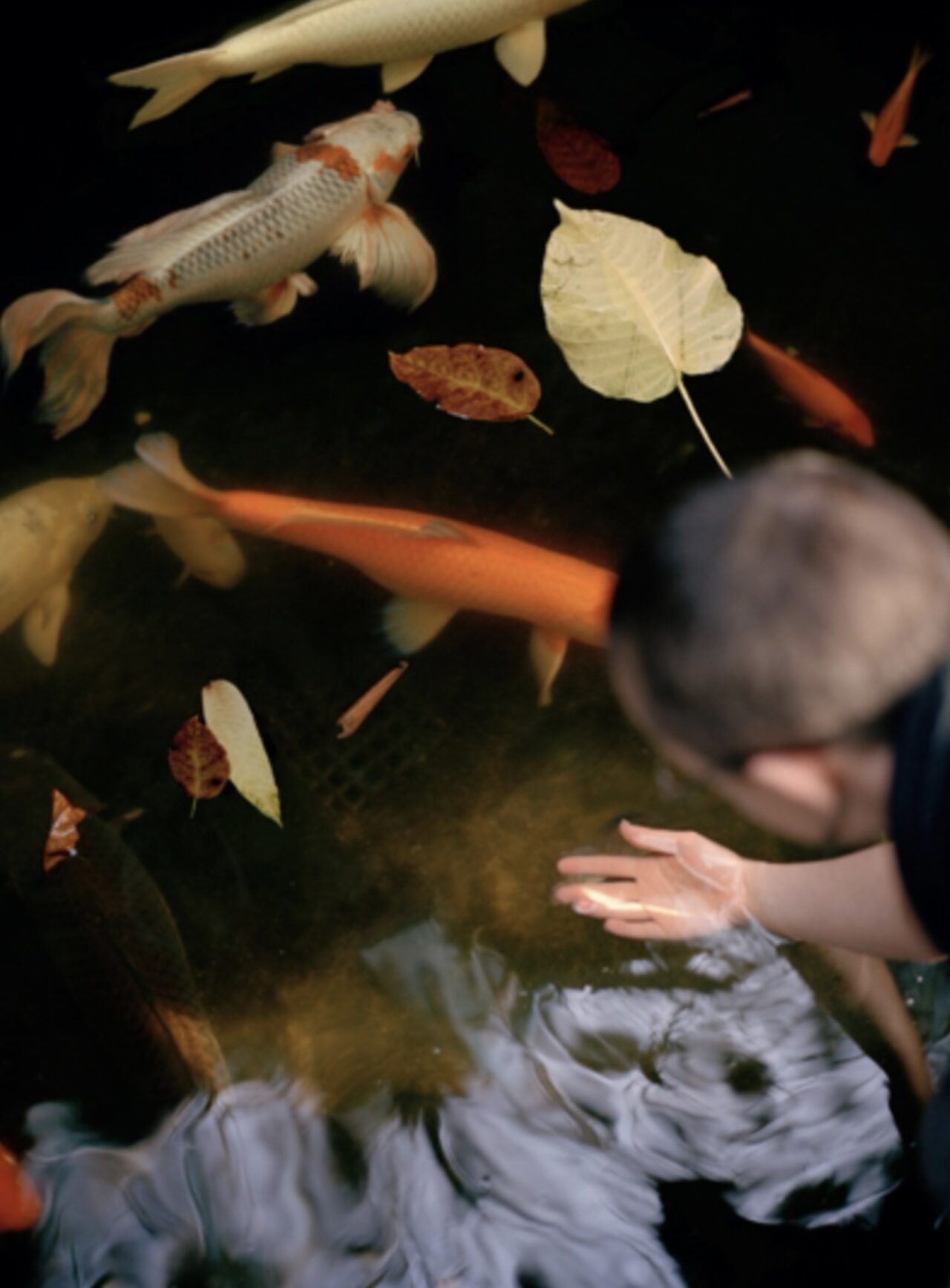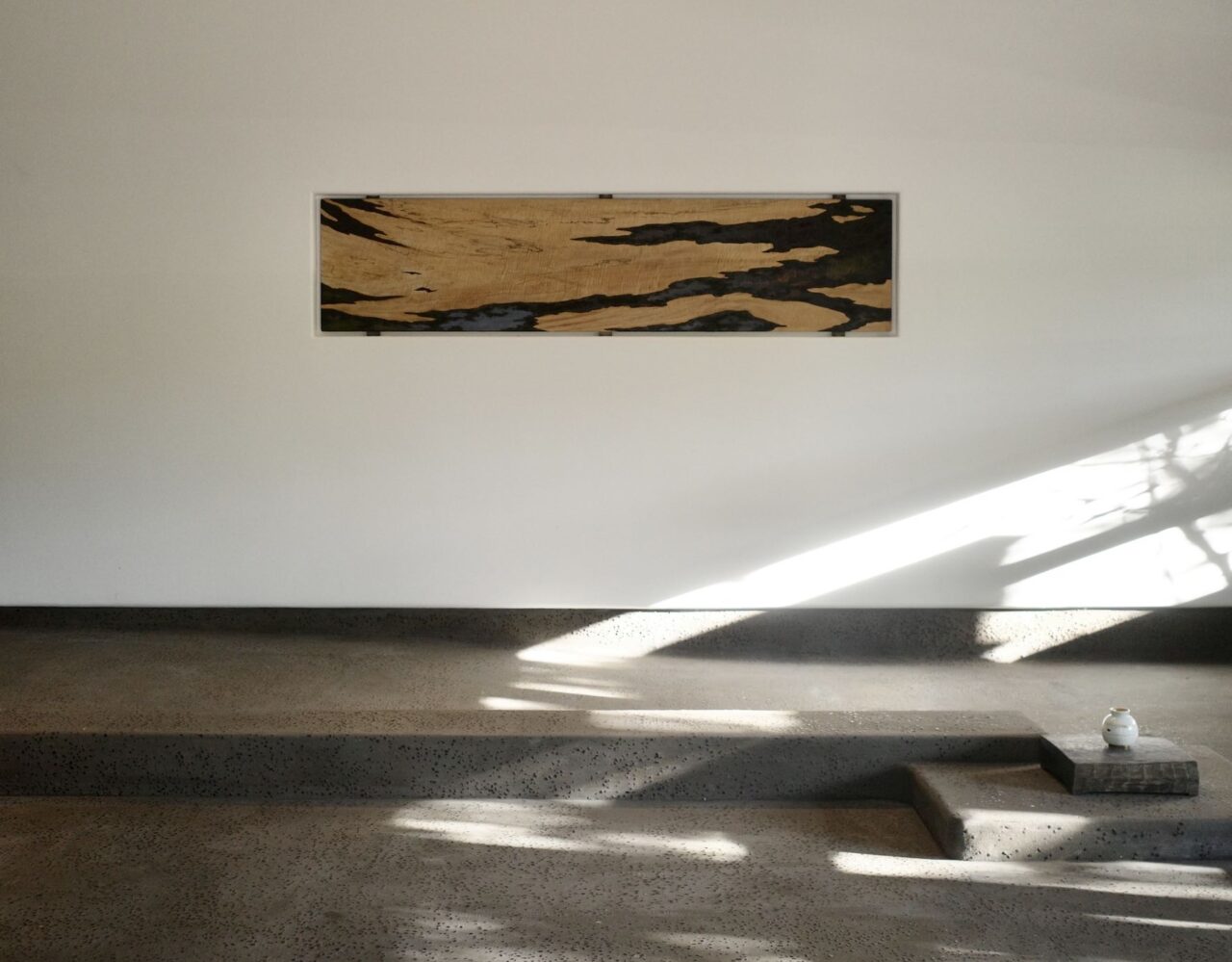THE WONDER OF STARLING MURMURATIONS
Photographer Søren Solkær Captures The Natural Phenomenon

Photographer Søren Solkær’s fascination with the flight pattern of starlings led him back to the marshlands of Southern Denmark, where, 37 years after first visiting as a child, he began an ongoing photographic series titled Black Sun to document this natural wonder.
What looks like a choreographed dance in the sky, and can seem link calligraphy ink from a distance, is the awe-inspiring formations of starlings in the sky. The flock of birds create patterns that change fluidly, from geometric to organic, their murmuration shapes are a natural wonderment.
It is on the west coast of Denmark on the Wadden Sea, where Søren captures the starlings in flight. The photographer states “When I started out I was unaware of the fact that the graphic shapes created by the starlings was a response to an attacking predator. Suddenly the display made perfect sense as the ultimate form of collaboration and collective consciousness.” Depending on their geographic location, their formations also completely change.
This collective consciousness enables starlings to unite in perfect cohesion, something which continues to wonder even Nobel Prize-winning physicists such as Giorgio Parisi who studied starlings in Rome for many years. Søren explains, “I have spent months photographing the same roman starling flocks and am amazed with the findings his physics background and brain have come up with.”
Most renowned for his portrait photography of musicians and artists (such as Björk, Adele, David Lynch), Søren has had his work featured as part of the permanent collection in The Royal Danish Library and The National Portrait Collection in Frederiksborg Castle, Denmark. No stranger to collaboration, this thread runs through to his interest driving his Black Sun series. “I have always seen the starlings a metaphor for universal collaboration. I believe the flight patterns describe a strong collective intelligence and create iconography that resonate with the human spirit.“
Exhibiting across the world in cities such as New York, London and Los Angeles, it is Søren’s latest exhibition in Sydney at Nanda\Hobbs that presented the Black Sun series and caught our attention.
Champ Editor-in-Chief Monique Kawecki speaks to Søren about the Danish landscape that has inspired him, the graphic shapes of starling murmurations, and what he discovered about the ephemeral occurrence of starling formations for his Black Sun photographic series.
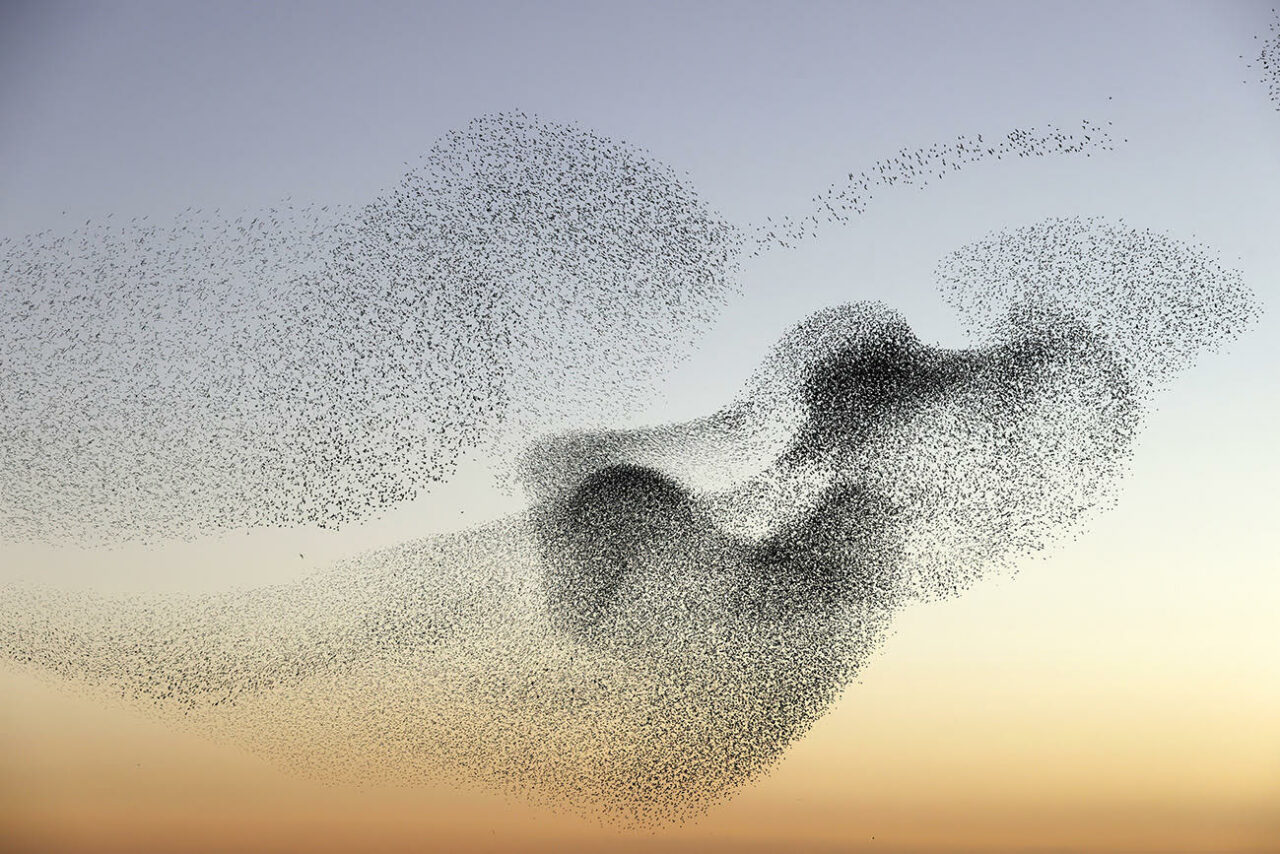
CHAMP: Hi Søren. Please tell us about how your fascination begin with starling migration?
Søren Solkær: When I was ten my parents took me to the Wadden Sea on the west coast of Denmark. Here I witnessed my first starling murmuration. It left a strong and lasting impression. It did, however, take me 37 years to return and start my photography project about starling murmurations. Something I believe I will keep photographing as long as I live.
What did you learn that surprised you most about the starling movements and their swift metamorphosis?
When I started out I was unaware of the fact that the graphic shapes created by the starlings was a response to an attacking predator. Suddenly the display made perfect sense as the ultimate form of collaboration and collective consciousness.

No hierarchies exist in the formation of migrating starlings, therefore how do they begin and how is their direction and formation informed?
When the flock is attacked the nearest bird respond to the bird of prey. The change in the behavioural state of one animal affects and is affected by that of all other animals in the group, no matter how large the group is. This is called scale-free correlation and provides each animal with an effective perception range much larger than the direct inter-individual interaction range, thus enhancing global response to perturbations.
How many birds usually come together for a formation?
It ranges from a few thousand birds up to a million.
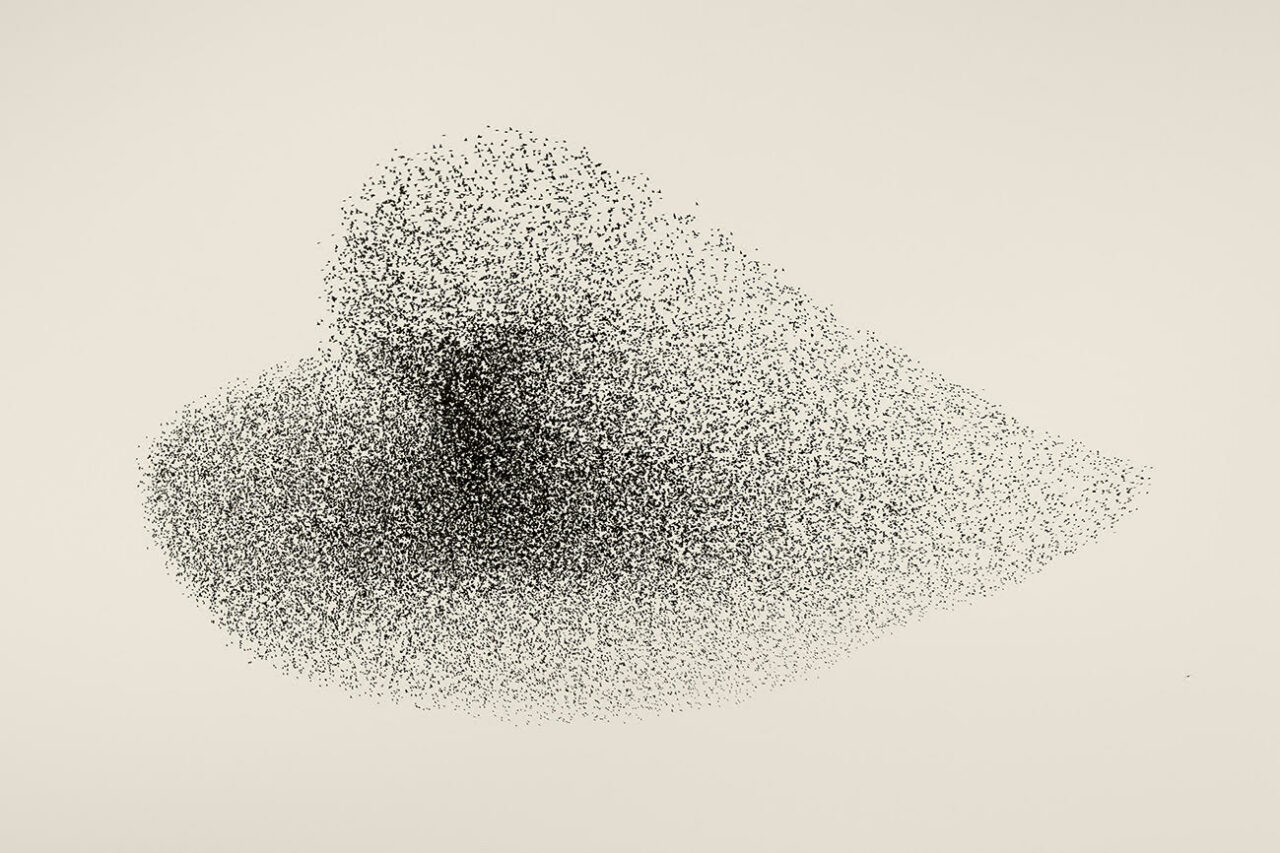
What local lore did you come across that referenced the starlings? What were the earliest stories about them and what did they say?
Historically bird migration has been – and to some extent still is – a mystery. Incredible theories, by some big scientists and thinkers have been predominant in the attempt to explain why birds would suddenly disappear – only to reappear 6 months later.
Aristotle formed the first theories saying that the birds didn’t migrate but would hibernate in hollow trees or at the bottom of lakes during the winter. In 1680 Englishman Charles Morton formed the theory that birds would migrate to the moon during winter.
Historically the birds hovering over Rome has played an important role in society, as Roman augurs, or diviners, scrutinized these patterns to attempt to decipher the moods of gods. Divination was crucial for major decision-making as the augurs looked to the skies and “taking the auspices” to see if the gods would give, or withhold, their approval.
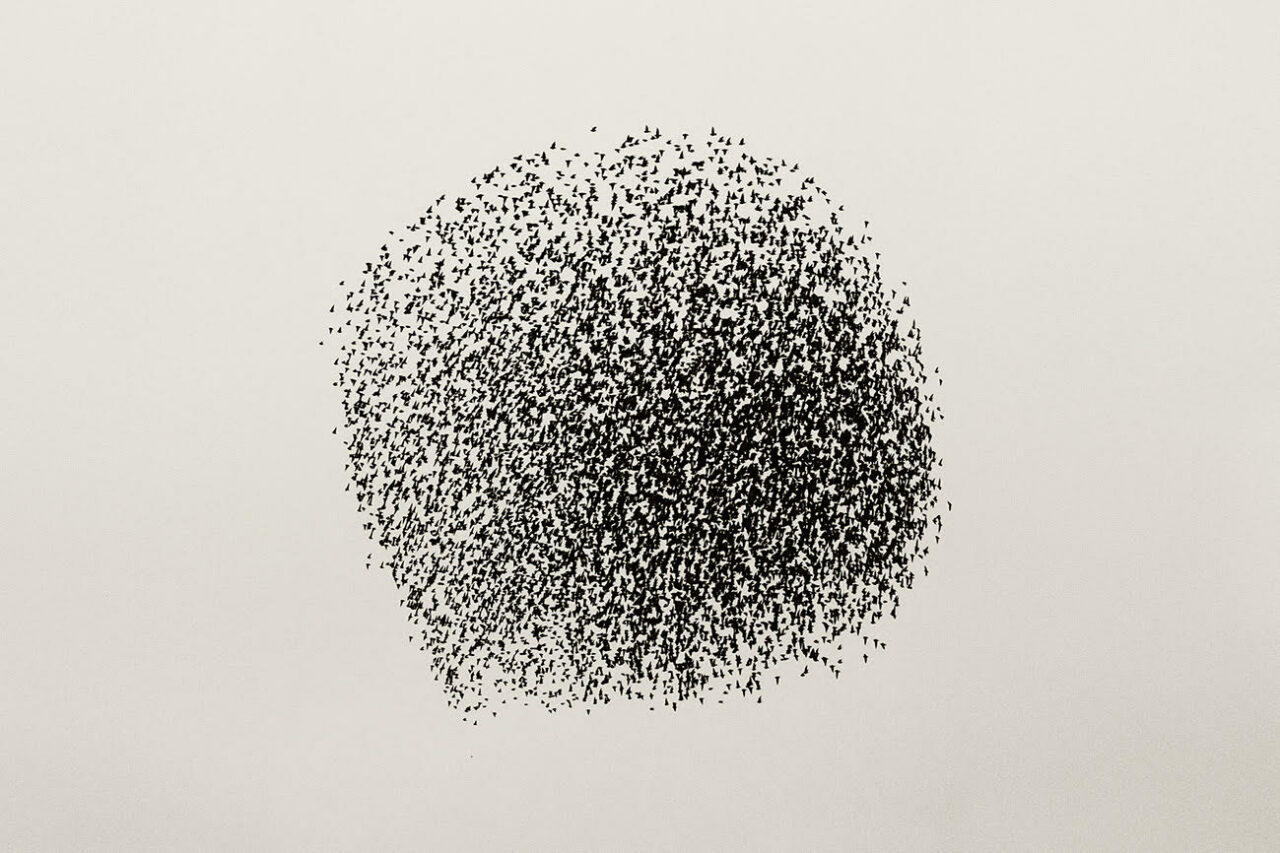
Tell us about the locations you shot the Black Sun series, and your experience documenting the starling migration. Was there a particular time or location you would need to ensure you didn’t miss?
I feel a strong connection to the graphic barren landscape I grew up with.
After photographing starlings in these familiar landscapes for two years I got curious about what a starling murmuration might look like in a different landscape and under different light conditions. It turned out that the murmurations take on very different shapes according to the geographical locations. In Northern Europe the shapes are horizontal, following the landscapes, whereas the Roman starlings often perform their displays vertically and in many smaller simultaneous murmurations. Also different birds of prey cause the starlings to perform differently and create very different shapes. Finally different light also makes the starlings appear very different. In southern Europe the flock can often take on a golden-redish hue, due to the warmer colour of the sun.

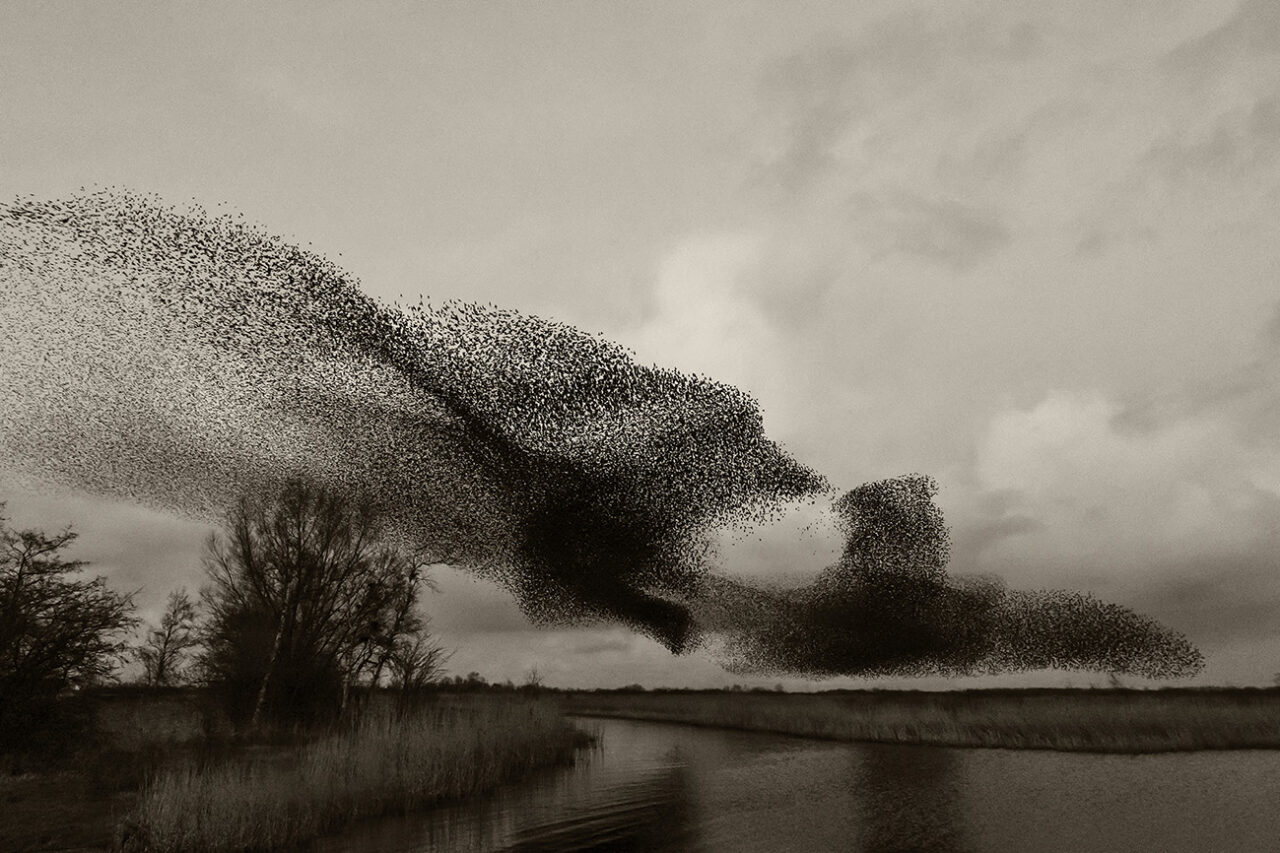
What greater existential questions have you thought about when photographing this series?
I have always seen the starlings a metaphor for universal collaboration. I believe the flight patterns describe a strong collective intelligence and create iconography that resonate with the human spirit.
In ancient Rome it was common belief that the gods were communicating with human beings through the symbols of the bird flocks on the sky. I would like to stimulate this connection with nature that has been lost in modern society. The starlings move as one unified organism that vigorously opposes any outside threat. A strong visual expression is created, like that of an ink drawing or a calligraphic brush stroke asserting itself against the sky. Shapes and black lines of condensation form within the swarm, resembling waves of interference or mathematical abstractions written across the horizon. The graphic and organic shapes of the starling murmurations range from meditative to highly dramatic as they perform their incredible ballet of life and death.
At times the flock seems to possess the cohesive power of super fluids, changing shape in an endless flux. From geometric to organic, from solid to fluid, from matter to ethereal, from reality to a dream – an exchange in which real time ceases to exist and mythical time pervades. This is the moment I attempt to capture – a fragment of eternity.

Physicist Giorgio Parisi, awarded the Nobel Prize in 2021, also documented “the interplay of chaos and cohesive oscillation in starling murmurations”. Can you tell us more about your interest in his studies and findings?
Parisi has studied starlings in Rome for many years. I have spent months photographing the same roman starling flocks and am amazed with the findings his physics background and brain have come up with.
Giorgio Parisi states, “The murmuration can be better understood if we study similar systems with phase transition like crystal formation, avalanches, metal becoming magnetized, liquid turning to gases. In each of the above-mentioned system at a particular moment in time, the phase change of a single element affects the whole system within no time. The phenomenon is described as scale-free correlation. In such critical systems, size does not matter. If a single bird changes speed or direction, no matter how small it is, it affects the whole system. We can use this insight to better understand complex systems include things like climate ecosystems, financial systems and global information networks.

What is it about the natural world that continues to capture your attention?
I believe that patterns in nature speaks to us human beings on a deep universal level. There is joy and recognition when we experience these pure forms. To me they seem to form a kind of language, that I believe many people can relate to.
I was relieved when I recently read that the ancient romans placed an oracle on the Aventine Hill to interpret the shapes of the starling flocks. They believed the Divine was speaking to them through the birds. I realised am not alone with my awe and fascination.
Ultimately I am hoping to inspire a deeper connection with nature – and to ourselves. Due to the ephemeral nature of the subject, my passion to continue capturing murmurations shows no sign of easing. Every encounter is truly unique and I remain committed to sharing these moments with the world through my lens.
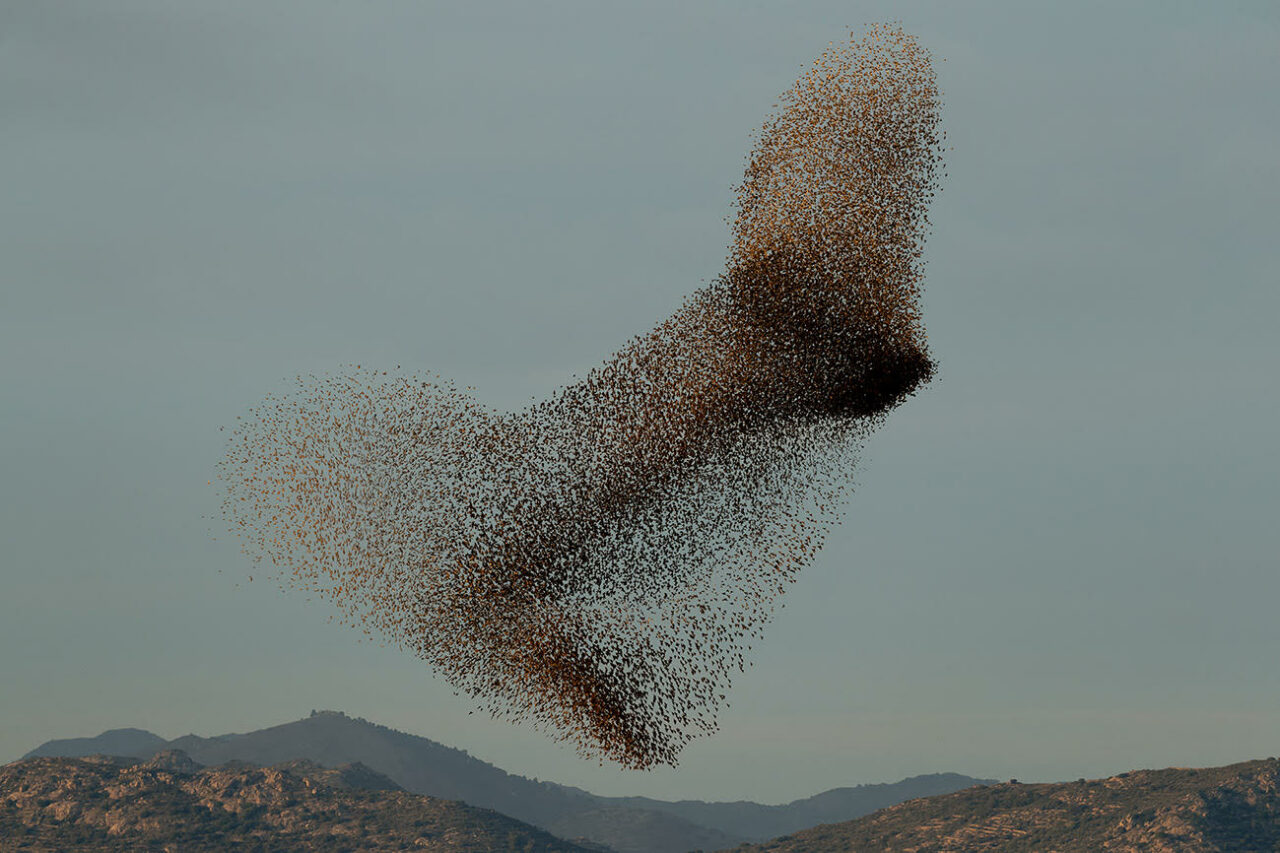
Søren Solkær’s Black Sun is available here. All images © Søren Solkær

























